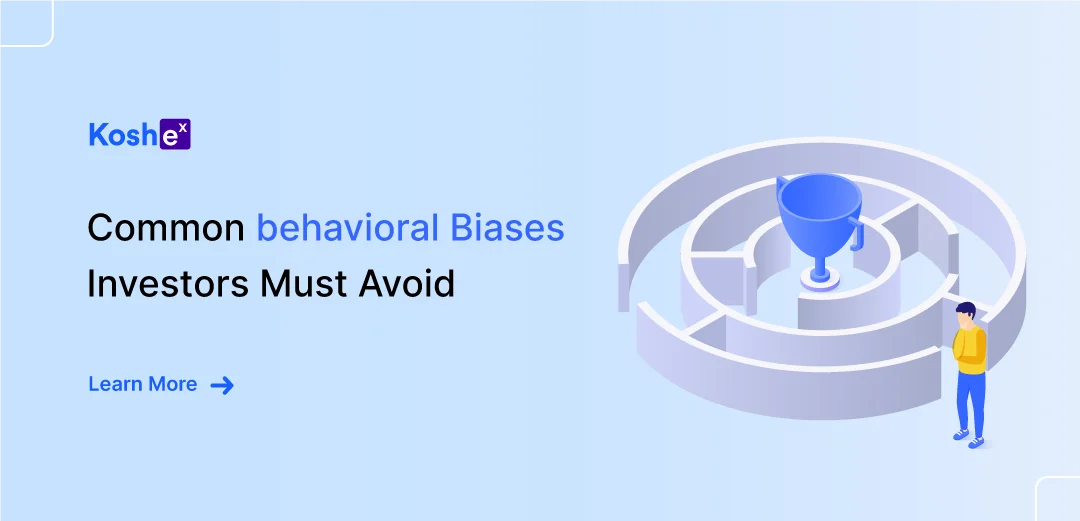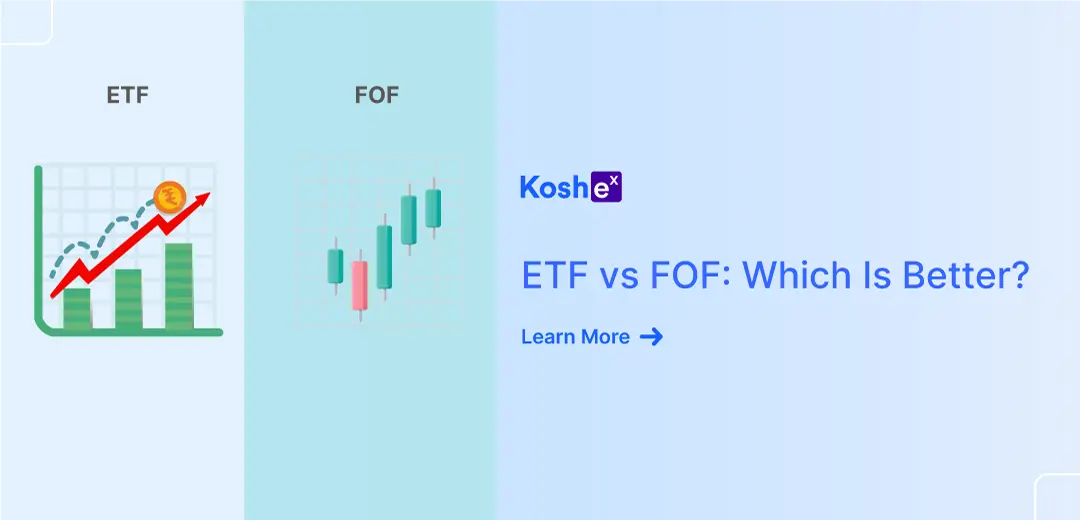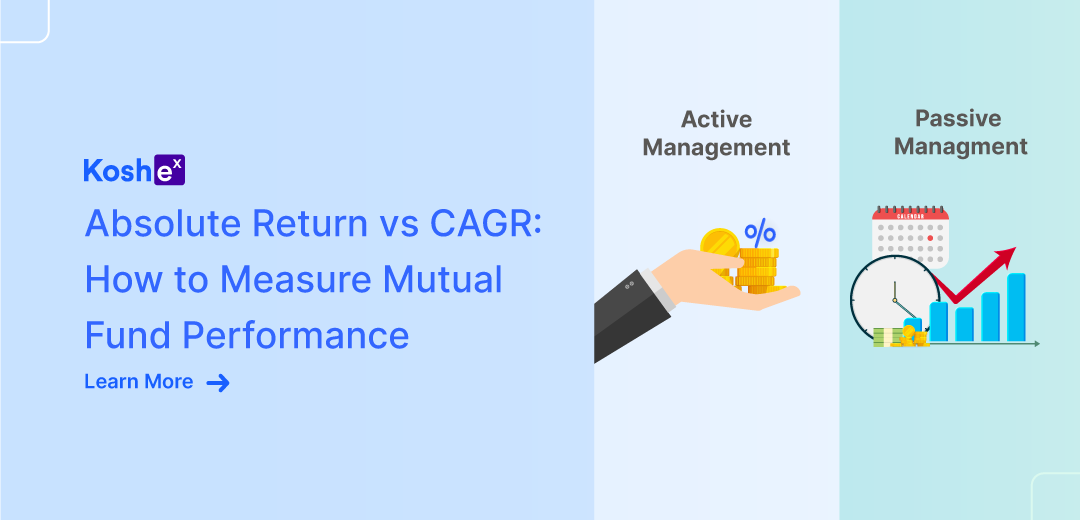We invest in stock and capital markets expecting good returns. But what separates the gainers from the losers is the investment decision that winners make and the knowledge that they possess.
Decision-making is one of the key aspects that will decide whether we will make a profit or loss in the stock markets. Where to invest, when to enter and when to exit the market are all key investing decisions. Sign up at Koshex to meet your financial goals.
People often fall prey to behavioural biases when trading and investing in stock markets (more commonly called behavioural finance). For instance, once the markets take a dip, investors panic and start selling their investments.
But within a short time, markets bounce back and rise even higher than where they were before they fell. But investors who exited the market booked their loss only to realise that they not only made a loss but also lost an attractive earning opportunity.
We certainly don’t want this to happen to us. Therefore, what are some of the most common behavioural biases, and how can we avoid the same?
Most Common Behavioural Biases Investors Face
Following are some of the most common behavioural biases investors face while making investment decisions:
Mental Accounting Bias
It suggests that we treat an asset that comes from one source differently than how we treat the same asset if it comes from a different source. For instance, we give importance to our salary income and try to preserve it.
However, if we win a lottery, we tend to take more risk with the lottery money and treat it differently. We might even invest the lottery money in some of the riskiest asset classes while fearing investing our hard-earned money in equity instruments.
How to deal with mental accounting bias: Adopt a goal-based investment approach. We should decide our investment goals and determine the steps necessary to achieve that goal. This ensures that no matter wherever we generate income from, we will utilize it to meet our investment goal.
Herd Mentality Bias
We often follow what everyone does irrespective of whether they are right or wrong. This is known as the herd mentality i.e., walking with the herd. We decide to walk with the herd because it gives us a sense of safety and security.
We fear making wrong investing decisions and making losses and therefore, we feel that if everyone is doing the same thing, then it must be the right thing to do. Further, the Fear Of Missing Out (FOMO) is real. We don’t want to miss out on any opportunity.
However, it is important to know that herd mentality is not always right. History contains some classic examples of herd mentality. For instance, in the dot com bubble of the 2000s, investors were investing in IT companies even though many of them were loss-making.
How to deal with herd mentality bias: Firstly, do thorough research before walking with the herd. This includes risk appetite and the overall time horizon for investment, among other things. Another important point is to allocate our assets properly.
Use the asset allocation to chart growth-oriented, personal finance choices. Consider investing 50% in equity and 50% in gold. We can rearrange some of the portions of our holdings to rebalance our portfolio.
Availability Bias
We tend to use the information that comes to our minds quickly and we place more emphasis on such information. For instance, if we witness a health hazard, we might buy insurance for the same.
In the case of stock market investments, we often become fearful if the stock markets take a dip or enter into a correction. We forget the fact that the markets will rise after the fall or correction.
How to deal with availability bias: Be a long-term investor and stick to our long-term goal. Ignore the noises as much as possible.
Do thorough research before making any investment decision. Determine the chances of reoccurrence of the event and what will be the after-effects once an event has occurred. This will help us adopt an independent and unbiased approach while making a financial decision.
Loss Aversion Bias
We hate losing more than we love winning. Even though we made gains, we often tend to look at what we lost. This reduces the joys of gain. Let’s see how this behavioural bias works in the case of stock markets:
We invested Rs. 5000 in a share and sold when the share reached Rs. 6500, making a profit of 1500. But if we lost Rs. 1000 in another stock, we will dwell on it for longer than we will be happy about our gains.
How to deal with loss aversion bias: One of the ways to deal with the loss aversion bias is to look at the overall picture.
We shouldn’t just focus on a single asset class where we might have missed an opportunity. While we miss out on certain opportunities, we bag others. Some asset classes underperform while others overperform. In the long run, everything averages out for the good.
Recency Bias
We give more importance to recent events as compared to earlier ones. We form an opinion that the recent event will continue in the future, and we make decisions accordingly. We often end up messing up our asset management and allocation and making wrong investing decisions.
For instance, suppose the equity markets performed outstandingly post covid due to the V-shaped recovery. Thus, investors formed an opinion that the markets will continue to rise. But this was certainly not the case in 2022.
How to deal with recency bias: Keep in mind that situations change. Once an overperformer can be an underperformer in the future. Recent events don’t always dictate the future. Therefore, have a proper investment strategy and stick to it no matter what.
In a Nutshell
Once we understand behavioural biases, we become more aware of our financial decisions and how our decisions based on the above biases can affect us. Next time, we will know whether we are investing because of our strategy or due to our biases.
This will prevent us from making wrong investment decisions. If you need any assistance in saving and investing, then we at Koshex can help you meet your financial goals as well as mitigate the above investment biases. The silver lining is to keep track of investment choices.
Kickstart your investment journey now!
Frequently Asked Questions
Q: I am confident that a particular share will rise. Am I prey to any of the above biases?
A: You need to determine whether you are facing overconfidence and confirmation bias. Decide accordingly and research thoroughly before investing.
Q: I invested in a particular asset and it has performed negatively. I am unsure whether to hold it or sell it.
A: You are facing the FOMO. Further, there is another deadly bias known as holding on bias whereby we believe in a particular investment so deeply that we keep on holding it even though it performed negatively. However, it is important to decide when to exit a particular share.
Determine the stop loss and if the share price falls below the stop loss limit, you should consider selling it.
Q: I came to know about a stock from my friend and he said that it is worth investing. However, others suggested that I should be cautious. I still feel like investing in it. What should I do?
A: You might be facing anchoring bias whereby we give more importance to the first piece of information that we receive. It is better to research thoroughly about the stock and then decide.









Leave a Comment